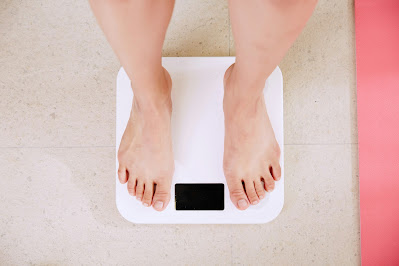The world is tired of hearing doctors’ advice for weight management, even if it is true. Many know of its seriousness from within. Moments before stepping on the scale, the majority of us feel nervous, anxious, and even terrified to see the number it would display. We start recalling all the instances where we picked up an extra serving, didn’t plan our meals, and ordered takeout. Here is some tough love coming your way.
It has been known for decades that being obese or overweight increases the risk of other diseases like diabetes, cancer, and coronary heart disease. It also alters biomechanics and increases the load on joints while even performing daily activities like walking and stair climbing, which in turn increases the chances of injuries like ligament sprains. It can even cause you to suffer from early osteoarthritis. Not surprising that patients with this degenerative joint disease are medically advised to manage their weight. It also takes a toll on respiration, by causing exertional dyspnoea, meaning feeling breathlessness on performing otherwise simple activities; and obstructive sleep apnoea syndrome, which is a scary but medically appropriate term for snoring. I will elaborate upon these limitations in other articles and for now, let’s focus on the bright side which is to manage obesity.
Now that we have given you enough reasons to understand how the consequences of obesity is not a desirable lifestyle and why you should take care of your body, I feel we need to discuss why do people become obese, despite many knowing the adverse effects. It’s certainly not something that is desired upon oneself. Most people suddenly realise what they have gotten into, whilst very few are truly aware of the accumulation while it is taking place.
One bad decision leads to another, and the rest is history. It might just have started with picking up an extra packet of chips on your way home, then binge-watching your favourite show on Netflix. You skip the gym for a day, a week perhaps. You start bringing work home with you, and you hardly have time for yourself anymore. You’re not interested in anything productive anymore. It’s just like going through the motions. Until one day you catch a glimpse of yourself in the mirror before going on a date, and now it hits. You feel miserable. As you can see, this is a vicious cycle. Compounding at its worst. It will run its course until you are determined to intervene and help yourself. Here’s the amazing part. There are people who will help those who need guidance, support, or professional advice. You will meet people along your path who can give you that push, but the only individual who can take the first step is you.
It has been known for decades that being obese or overweight increases the risk of other diseases like diabetes, cancer, and coronary heart disease. It also alters biomechanics and increases the load on joints while even performing daily activities like walking and stair climbing, which in turn increases the chances of injuries like ligament sprains. It can even cause you to suffer from early osteoarthritis. Not surprising that patients with this degenerative joint disease are medically advised to manage their weight. It also takes a toll on respiration, by causing exertional dyspnoea, meaning feeling breathlessness on performing otherwise simple activities; and obstructive sleep apnoea syndrome, which is a scary but medically appropriate term for snoring. I will elaborate upon these limitations in other articles and for now, let’s focus on the bright side which is to manage obesity.
Now that we have given you enough reasons to understand how the consequences of obesity is not a desirable lifestyle and why you should take care of your body, I feel we need to discuss why do people become obese, despite many knowing the adverse effects. It’s certainly not something that is desired upon oneself. Most people suddenly realise what they have gotten into, whilst very few are truly aware of the accumulation while it is taking place.
One bad decision leads to another, and the rest is history. It might just have started with picking up an extra packet of chips on your way home, then binge-watching your favourite show on Netflix. You skip the gym for a day, a week perhaps. You start bringing work home with you, and you hardly have time for yourself anymore. You’re not interested in anything productive anymore. It’s just like going through the motions. Until one day you catch a glimpse of yourself in the mirror before going on a date, and now it hits. You feel miserable. As you can see, this is a vicious cycle. Compounding at its worst. It will run its course until you are determined to intervene and help yourself. Here’s the amazing part. There are people who will help those who need guidance, support, or professional advice. You will meet people along your path who can give you that push, but the only individual who can take the first step is you.

Comments
Post a Comment